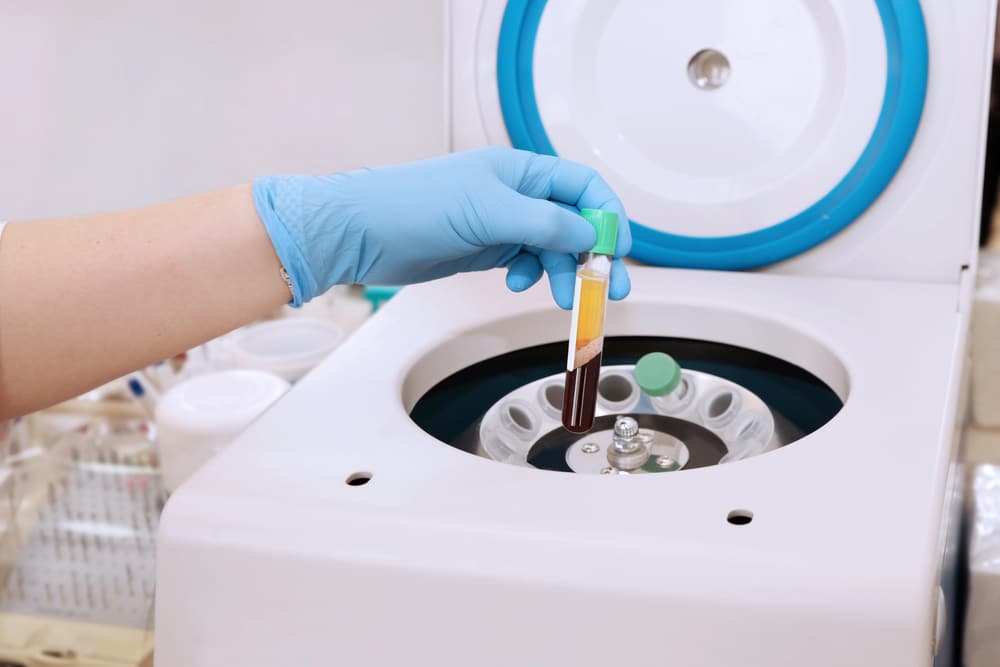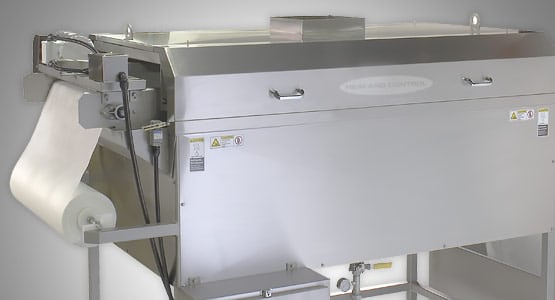There are many uses for non-woven fabrics, including filtration.
According to Tara Olivo with Non-Wovens Industry:
“Filtration continues to be one of the fastest growing markets for the nonwovens industry. Demand for filtration media is driven by the consumer need for clean air and drinking water, increased fuel efficiency in vehicles, increased urbanization of global populations and infrastructure improvements in developing countries, among other factors.
“According to market research company Smithers, filtration is the second largest end-use market for durable nonwovens and the third largest market for nonwovens overall. Last year, filtration accounted for 9.9% of all nonwovens sales.
“’Metropolitan areas continue to grow, there are more and more vehicles on the roads, and new regulations on indoor air quality require new product solutions,’ says Günter Müller, associate sales director Filtration Products for German nonwovens producer Sandler. ‘These are some of the major factors shaping the filtration market and they are not limited to any particular regions.’
Ahlstrom-Munksjö’s Extia Targets Air Pollution
“Filtration is a key market for the Finnish nonwovens producer Ahlstrom-Munksjö, which has a long history of producing filtration media. Within its Filtration and Performance business area, it develops and produces filtration materials for engine oils, fuels and air, as well as industrial filtration products at facilities in the Americas, Europe and Asia.
“In recent years, the company has been focusing on meeting the needs of various markets within industrial filtration, and has launched products for gas turbine filtration and air pollution control.
“The company uses multiple nonwovens technologies within its asset base to tailor make unique solutions. An example of this is its newest product Extia, which combines the durability of a spunbond media and the filtration performance of a wetlaid media. Ahlstrom-Munksjö is also able to add special features to its products by various coating and lamination techniques.
“Specifically for air pollution control, Extia launched in November 2018, and is designed to extend filtration lifetime for air pollution control applications. ‘It helps to protect people and the environment and it extends filtration lifetime by more than 40%,’ says Noora Blasi, marketing and communications manager, Ahlstrom-Munksjö.
“In September, Ahlstrom-Munksjö expanded the Extia range, offering a complete mid efficiency range, including flame retardant, surface conductive and food approved versions. Products are designed to meet the safety requirements of specific industrial air pollution control applications. The expanded portfolio also includes a high efficiency range reaching up to EN1822 H13, specifically designed for applications involving very fine particles and challenging dusts.
“’The filtration market keeps developing and it’s still driven by key megatrends including demographic changes, more stringent emission standards and increased demand for cleaner air and water,’ Blasi adds.
Bondex Focuses on Industrial Filtration
“Nonwovens and roll goods manufacturer Bondex, of Trenton, SC, is a subsidiary of the U.K.-based multi-national manufacturing company Andrew Industries, focusing on filtration, electrical insulation, medical and home care markets.
“Brian Little, president of Bondex, believes the filtration industry is ripe for innovation as the global needs continue to change. ‘Industrial filtration has been confined to a limited number of material solutions for a long time, but with recent advancements such as hydroentangling of filtration felt, we see that customers are reconsidering ways to solve needs in filtration,’ he says.
“Bondex’s solution for this is its Hydrolox technology, which launched two years ago. The company’s proprietary process combines aspects of traditional needlefelt with high-pressure hydroentangling for consolidation of the material. This high pressure water enables it to employ fibers which split under high pressure, generating very fine fibers in the felt, which enables the material to provide performance comparable to ePTFE laminated felt, but without the practical issues experienced with membrane. Bondex can produce hydroentangled filter felt in virtually all fiber types, which the industry employs in industrial air and liquid filtration. Fibers such as aramid, polyester, PPS, polypropylene, homopolymer acrylic and polyimide are most common, according to Little. ‘This technology produces material which is more efficient than needlefelt and is so strong that is does not need a scrim.’
“Opportunities for Hydrolox are likely in the asphalt industry where its lightweight value can be employed to replace heavy weight aramid needlefelt. Where higher efficiency is required in the cement industry, Little says homopolymer acrylic Hydrolox offers users new options without the use of membrane laminated felt. Moreover, the growing applications of pleated materials is being addressed through the pleated offering in its hydroentangled technology.
“’Also, we are seeing where hydroentangled nonwovens are replacing woven goods in shaker bags and filter press cloths as a function of the performance and value,’ he explains.
“In terms of product development, Bondex has added a range of fiber types available in its hydroentangled filtration felt over the past few months, as well as chemical treatment capability. The company is actively considering future investments to meet a range of customer needs in various markets, Little says.
Freudenberg Acquires Majority Stake in Apollo
“Recently Freudenberg has focused on strengthening its position in China’s rapidly growing market for filtration solutions.
“At the end of March, Freudenberg Filtration Technologies finalized the acquisition of a 75% majority stake in Apollo Air-Cleaner Co., Ltd., a leading supplier of air and water filtration solutions in China, with approximately 1000 employees and €96 million in sales.
“The new joint venture with the previous sole proprietor Apollo Trading Group, Japan, with the remaining 25% stake, began operations in April under the name Freudenberg Apollo Filtration Technologies.
“Air and water filtration solutions have been witnessing strong year-on-year growth rates, especially in China, thanks to legislation demanding stricter regulations and increased environmental awareness, according to Freudenberg. Experts estimate that the global market for products of Apollo – filters for room air purifiers, decentralized ventilation systems and water treatment – will have a total value of some $5 billion by the year 2022.
“’Apollo is a great fit for Freudenberg,’ says Dr. Andreas Kreuter, CEO of Freudenberg Filtration Technologies. ‘It is an innovative technology company that complements our own portfolio of filtration solutions for indoor air and water purification. The company also has first class production expertise and excellent networks in the industry.’
Mann + Hummel Grows through Acquisition
“Mann + Hummel, which was founded as an automotive components supplier in 1941 and produces a range of filter systems such as systems and components for automotive original equipment, products for the automotive aftermarket, industrial filters and water filtration, has been taking steps to grow outside of the automotive industry. It has accomplished this through multiple acquisitions over the last year.
“In 2018, the German company purchased Tri-Dim, a Louisa, VA-based company, specializing in air filtration for a variety of commercial and industrial spaces including hospitals, schools, automotive factories and paint rooms, data centers, food and beverage settings, and other commercial environments. The acquisition provided Mann + Hummel with a full-line of HVAC filtration products and services, including air & liquid filtration, heating/air conditioning supplies, cleanroom filtration, air purification equipment, gas phase filtration, and air testing & remediation.
“Then, this past August, Mann + Hummel acquired Hardy Filtration, a Canada-based air filtration company. This acquisition helped expand the global footprint and manufacturing capabilities of the Tri-Dim Filter business. Founded in 1993, Hardy develops, manufactures and markets a range of filtration products for various applications such as air filters, paint booth filters and dust collector bags.
“’We are committed to expanding in the air and water filtration industries, and we are excited to announce the addition of the Hardy team less than a year after the successful addition of Tri-Dim Filter Corporation to our group,’ Sean Cromie, president and general manager of Mann+Hummel’s Life Sciences & Environment business unit, said at the time of the announcement.
“The merger with Tri-Dim Canada provides expanded market share and opportunities to grow the combined businesses throughout Canada.
Sandler Continues to Expand Filtration Range
“With over four decades of experience in the filtration market, Sandler is one of the major players in the filtration industry today. Sandler’s product range includes fiber-based nonwovens and meltblown filter media for filters classed G1–E11 / MERV 1-16 and for all efficiency ranges according to ISO 16890. It utilizes different combinations of synthetic raw materials and production technologies, which allows for the adaptation of the nonwoven’s properties to the specific application. Multi-layer structures create depth filtration properties. Its filter media are used in HVAC applications, the transportation industry, synthetic vacuum cleaner bags, customized special filters for liquid filtration as well as medical and hygiene applications.
“Among Sandler’s latest developments are filter media for use in activated carbon filters. ‘With these products, the functionality of activated carbon filters and the optimum particle filtration provided by nonwoven media can be combined in a durable product—for example for cabin air filtration in vehicles,’ says Sandler’s Müller.
“Sandler is also expanding its range of filter media for liquid filtration. ‘New mobility concepts require the filtration of specific liquids to protect the propulsion technology. The latest Sandler developments offer nonwoven solutions for these specialized applications. In addition, process- or drinking water as well as other process liquids can be listed in this context,’ Müller adds.
“From Sandler’s view, the filtration industry continues to hold a lot of potential and demand for innovation, and product development is ongoing.
“’The importance of this sector is likely to continue to grow in light of new legislation and environmental concerns,’ says Müller. ‘There is potential for growth and new challenges arise regarding major trends such as electromobility and regarding new players from Asian countries. It will be up to filter media manufacturers to develop innovative product solutions that meet changing customer and regulatory requirements. All in all, that certainly makes the filtration industry an interesting market to do business in.’
TWE Group Develops ParaHyd
“TWE Group manufactures filter media using different technologies such as mechanical bonding (needling or waterjet), thermal bonding or chemical bonding.
“TWE believes there are more opportunities in the field of filtration due to the high demands of governments for environmental protection, along with more and more emphasis placed on clean air and clean water.
“’In the field of filtration, we see growth due to the new requirements,’ says Carsten Bräuer, business unit director Filtration, TWE Group. ‘However, new regions will also be added as they have some catching up to do in the area of environmental protection. Here we see an increase in the economic region MENA for the future.’
“In recent years, TWE has focused on and invested in product development, which resulted in a new product portfolio. Due to the increasing demand of the filtration market for fully synthetic media, which enables ever finer filtration performance, TWE developed ParaHyd. ParaHyd is a mechanical bonded fully synthetic filter medium which fulfills the filter standards ISO ePM10> 50%, ISO ePM2.5> 50% and ISO ePM1> 50% according to ISO 18690.
“ParaHyd is suitable for a wide variety of applications, such as filters for heating ventilation, air conditioning systems (elements with pleated filter media), gas turbines, engine air intake filters, dust storage, filtration of hydraulic oil, liquid filtration (cooling lubricants, water, food) and de-dusting filter (surface filter).
“According to TWE, ParaHyd combines several functions in one medium and enables a significant improvement of the element manufacturing as well as the final product properties. Because the new product design eliminates the need for separate layers, ParaHyd is able to safely separate both small particles and high dust holding capacity. The multilayer nonwoven consists of two to five layers: layers of coarse fiber nonwovens on the dirty gas side (depth filter); fine fiber nonwoven on the clean gas or dirty gas side and layers of coarse fibers on the clean gas side (surface filter).
“’Filtration is a stable and interesting future market for the TWE Group due to the increasing importance of environmental protection,’ Bräuer says.”









